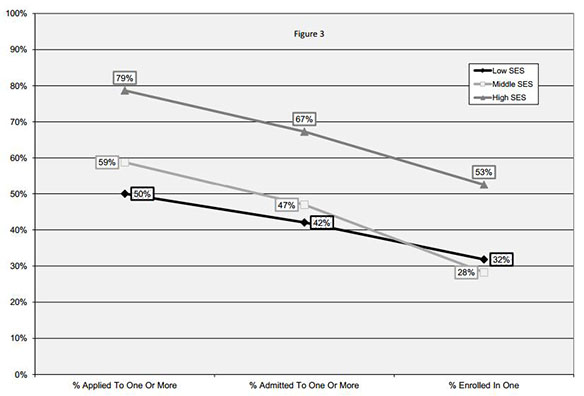Sociologist Alexandria Walton Radford has some new research that is rather disheartening. Radford was interested in the college choices of ambitious and high-performing high school students from different class backgrounds. Using a data set with about 900 high school valedictorians, she asked whether students applied to highly selective colleges, if they got in, and whether they matriculated.
She found a stark class difference on all of these variables, especially between high socioeconomic status (SES) students and everyone else. Over three-quarters of high SES valedictorians (79 percent) applied to at least one highly selective college. In contrast, only 59 percent of middle SES and 50 percent of low SES valedictorians did the same. Admission and matriculation rates followed suit.

Interviews with a smaller group of these valedictorians shed light on why we see such dramatic differences in the application choices of low, middle, and high SES students. Radford explains that most students applied to schools with which they were already familiar. High SES students were much more likely to know people who had attended highly selective colleges, so they were more comfortable applying. They also felt more confident that they’d be successful at such an institution; less affluent students were more intimidated by these schools.
Radford concludes by arguing that it’s a mistake to leave decisions about whether and how to apply for college admission to families. Doing so, she writes, “allows the advantages (and disadvantages) of one generation to be passed on to the next generation.” School-based college guidance would go some way toward evening out the differences and making higher education admissions more meritocratic.
This post originally appeared onSociological Images, a Pacific Standard partner site.




